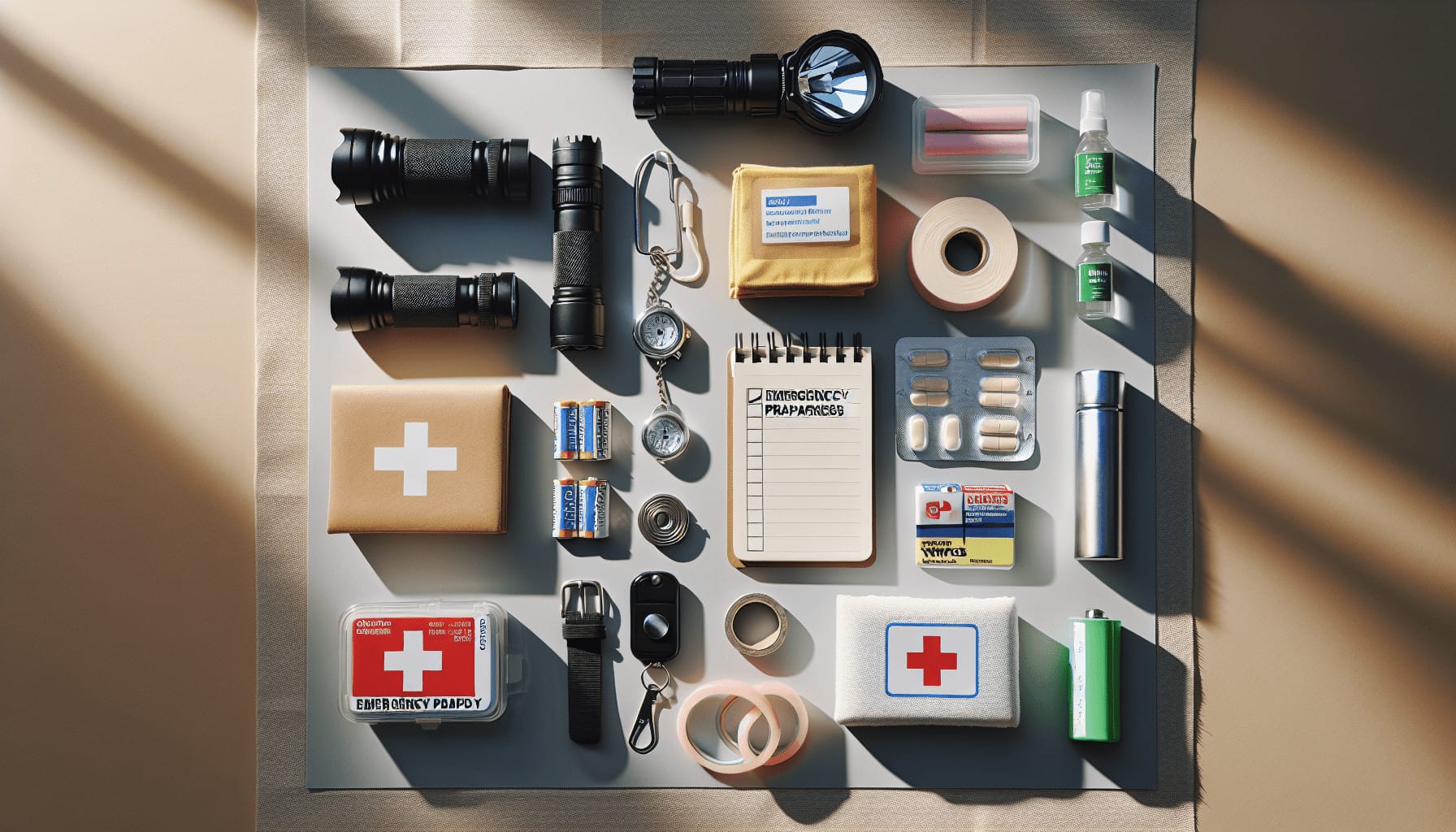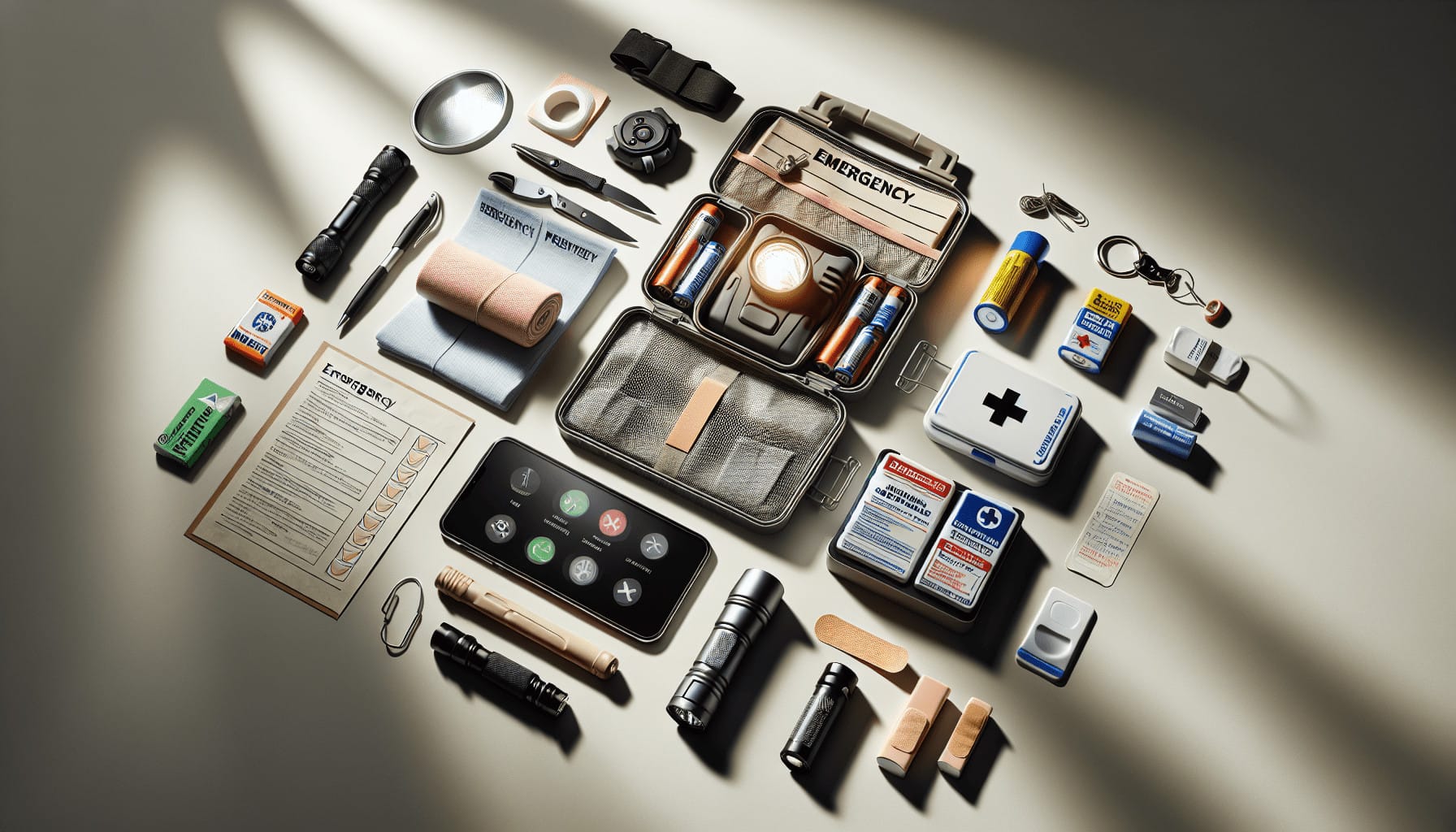Have you ever thought about how prepared you are for an emergency at home? When we think about home security, often our minds go to securing windows with locks or perhaps installing a top-notch alarm system. While those are certainly important steps, truly being prepared for an emergency requires going a bit further. Imagine a situation where a sudden storm cuts off power, or a more severe incident forces a quick evacuation. How well-equipped is your home to handle the unexpected? Let’s dive into the nitty-gritty of emergency preparedness with an emphasis on home security, ensuring you’re ready when it counts.

Understanding the Importance of Emergency Preparedness
Emergency preparedness is about having the right systems in place to handle unexpected events smoothly. It’s not all about natural disasters; it could be a sudden break-in attempt or a fire. Being prepared means having the necessary tools and protocols that ensure your family’s safety and security, especially during uncertain times.
Why Home Security is Essential
In today’s world, home security serves a dual purpose: it protects against intrusions and becomes a critical asset in emergencies. Whether you’re dealing with a power outage, fire, or environmental disaster, having a home that’s prepared makes a huge difference. Not only does it keep potential threats at bay, but it also helps manage urgent situations more efficiently.
Creating an Effective Emergency Plan
Planning is the foundation of preparedness. It involves setting up processes and understanding exactly what you and your family need to do during a crisis. Let’s break down the essential components.
Developing a Communication Plan
The cornerstone of any emergency plan is communication. Knowing how to reach each other during an emergency is crucial.
- Ensure all family members know their roles: Whether it’s through group messages, walkie-talkies, or an intermediary.
- Create a list of emergency contacts: Include neighbors, family members, and local authorities. Be sure this list is easily accessible to everyone.
Setting Up Emergency Kits
An emergency kit is your go-to resource when crisis strikes. This kit should include everything from first-aid supplies to basic food and water provisions.
Basic Items to Include:
| Item | Quantity | Purpose |
|---|---|---|
| Water | 1 gallon per person per day | Hydration and essential hygiene |
| Non-perishable food | 3-day supply for each person | Sustenance in the absence of access to cooking |
| Flashlight and extra batteries | 1 per household | Provide light when power is out |
| First-aid kit | 1 comprehensive kit | Managing minor injuries and health issues |
| Personal hygiene items | As needed | Soap, toilet paper, and other essentials |
| Manual can opener | 1 | Accessing canned food during power outages |
| Portable phone charger | 1-2 | Keeping communication devices powered |
Identifying Safe Spots in Your Home
Different emergencies require different parts of your home to act as safe zones. Know which areas will best serve your needs during a specific type of emergency.
- Tornado: Small, windowless interior rooms or a basement.
- Earthquake: Under sturdy furniture away from windows.
- Fire: Ensure you have multiple egress points and a meetup point outside.
Home Evacuation Plans
Practicing home evacuation ensures that everyone knows how to exit the house quickly and safely. Practice at different times of the day and under various conditions.
Creating a Map
Draw a simple map that shows exits for each room. Clearly mark escape routes and practice them regularly to ensure everyone is familiar.
Decide On Roles
Assign tasks to family members based on capacity and practicality. One person can be responsible for grabbing the emergency kit, another for assisting children or pets.
Home Security Measures to Fortify Your Space
A fortified home is less susceptible to crimes and also better prepared for emergencies. Let’s explore which home security measures can also assist during unforeseen situations.
Installing Alarm Systems
Alarms are more than burglary deterrents. Many systems come with emergency notification features that alert both you and the local authorities.
Features to Consider
- Smoke and Carbon Monoxide Detectors: These should be integrated into your alarm system.
- Glass Break Sensors: For detecting intrusion.
- Panic Buttons: Useful if immediate help is needed.
Reinforcing Windows and Doors
Beyond aesthetics, secure windows and doors make a significant difference in emergencies, particularly if high winds or attempted break-ins occur.
Options to Reinforce Security:
- Multi-lock systems: Additional locks on doors and windows can prevent forced entry.
- Security bars: Cost-effective and strong deterrents for windows.
- Shatter-resistant film: Keeps glass intact during impacts.
Implementing Smart Home Features
Smart home technology can enhance your security preparedness by allowing remote monitoring and control.
- Remote Monitoring: Cameras provide a live feed that can be accessed from anywhere.
- Automated Lighting: Having lights turn on at predetermined times can deter potential intruders.
- Smart Locks: These provide keyless entry and allow monitoring of who accesses your property.
Learning and Drilling for Emergencies
Knowledge is power, especially when facing critical situations. Ensure your entire household knows what to do and has practiced these skills.
Practicing Drills Regularly
Like a fire drill at school, practicing home evacuation and emergency responses helps make real situations less stressful and chaotic.
- Schedule at least quarterly drills.
- Vary the scenarios to include nights and weekends.
- Debrief afterward to find areas for improvement.
Educating Family Members
Make sure every member of the family, regardless of age, knows how to operate emergency tools and understands the importance of the plan.
- Fire Extinguisher Usage: Ensure everyone knows how to operate it.
- CPR and First Aid: Older family members can take courses to better prepare for health emergencies.
- Recognizing Alarm Sounds: Children should understand different alarms and what each indicates.

Staying Informed During an Emergency
Access to information is crucial when deciding on the best course of action during a crisis.
Utilizing Local Resources
Sign up for local alert systems and monitor weather or news updates closely.
- Mobile Alerts: Services offered by local governments can provide real-time updates.
- Weather Radios: In case of phone failure, a weather radio can provide continuous updates.
Keeping Updated Contacts
Always have an updated emergency contact list. Make sure it’s stored in multiple places, both physical and digital.
Review and Iterate on Your Plan
Once your plan is in place, the most important step is revisiting and revising it as needed.
Assess and Adjust
Periodically assess the plan’s effectiveness after drills or real incidents.
- Update your emergency kit regularly; check expiration dates on perishables.
- Reassess roles as children grow older or your living situation changes.
- Adapt to any security upgrades or new smart home features installed.
Seek Feedback
Involve each household member in the evaluation process. They can provide valuable insight into what’s working or what might need to be rethought.
Conclusion
Being prepared for emergencies at home isn’t an overnight event—it’s a process that involves careful planning, education, and regular practice. Remember, being prepared is about ensuring peace of mind and an immediate, confident response to the unexpected. By investing time in creating a robust emergency plan and fortifying your home security, you’re not just protecting your home, you’re safeguarding every loved one within it. How ready are you now to face an unexpected emergency?
